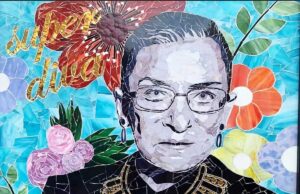Whether in tales or legends, in fantasy or satire, it seems that witches and witchcraft remain present in many areas of our lives. Popularly viewed as synonymous with evil, the true story of witches and “witchcraft”, far from the popular fiction that has historically accompanied them, would seem to be more linked to a notion of transgression.
Some data suggest that between the 15th and 18th century, in Europe alone, a few thousand people were persecuted and accused of witchcraft, and many of them were executed for this “crime”. “Witchcraft”, whatever that meant to them at that time, was considered a serious crime that by law was punishable by death by hanging, a punishment that was applied, for example, to those accused of murder. Burning at the stake as a capital punishment for witchcraft was only applied in Scotland and by the Spanish Inquisition.
Mainly because of the beliefs and fiction of the time, in which women were seen as morally and spiritually inferior to men, and therefore weaker and more vulnerable to demonic agents, most trials and executions were carried out on women. Of course, while there was no systematic discrimination based on gender issues when it came to accusing someone of practicing witchcraft, there was a clear discrepancy between formal accusations, trials, and especially female convictions in relation to what happened to men. Across Europe, between 70% and 80% of those accused of witchcraft were women. The majority of those accused, tried and executed were poor people, in the case of women, mainly widows and/or menopausal women, women who in one way or another seemed to transgress the moral “norms” that at that time privileged the male condition.
The majority of the accused, prosecuted and executed were poor people, mainly widows and/or menopausal women, women who in one way or another appeared to be transgressing the moral “norms” that at that time privileged the male condition
Probably the best known trial for witchcraft was the one that took place in the small town of Salem, Massachusetts in 1692, in which a typical case of puritanism and collective paranoia of the British colonists sparked a series of absurd allegations that culminated in the tormenting deaths of more than 20 people accused of witchcraft. Bridget Bishop was the first “witch” to be tried and executed by hanging for witchcraft in the Salem trials. Bishop was an almost 60-year-old woman who owned a tavern, and among some of the absurd arguments behind her witchcraft charge, one person is said to have testified that she stole eggs from a farm and then “turned into a cat”. It is said that this was a woman of hard character to negotiate with men, and with a deep critical stance towards others, who was also subject to a series of accusations of gossip and “promiscuity” in the small town of Salem.
At least in the case of the Salem “witches”, the disparity in trials and executions does seem to be explained by the harshness of the norms of the puritan society with Calvinist roots that enacted an exacerbated rigidity in the observance of public and private moral conduct. Thus, transgressive behaviors, such as autonomy or agency, no doubt could have conspired to have some of them prosecuted for witchcraft.
In fact, as early as the 1650s in New England, when Quakers believed that anyone, regardless of gender, could teach divine truth, and they began to integrate female spiritual leaders into their churches, the Puritans rejected such inclusion and branded the female spiritual leaders as witches who needed to be exterminated, fundamentally because, as it occurs in patriarchal societies, they thought that women could not occupy positions of power and domination. Building the image of witches may well have served to reinforce aspects related to gender inequality, marginalizing women from activities and attitudes that were assumed to be exclusive to men.
Thus, transgressive behaviors, such as autonomy or agency, challenging women’s traditionally assigned roles, no doubt could have conspired to have some of them prosecuted for witchcraft
And since we are talking about witches, covens, and transgressions, in the garden of the former Plaza Roma, now called Rio de Janeiro, is one of the most emblematic buildings of the Roma neighborhood in Mexico City. Built in 1908 by the British engineer R.A. Pigenon, at the express request of President Porfirio Díaz for the celebrations of the centennial of the country’s Independence, the Rio de Janeiro building was the first Gothic-style apartment building in the city, although its interior, due to some remodeling, preserves an Art Deco style.
Built almost entirely out of red brick, the building is better known as “The House of Witches”, mainly because one of its towers is topped with a roof that resembles a witch’s hat, and also because, just below the roof, there are two small niches and a window that seem to draw a face. As if this were not enough, on the first floor of this emblematic building there is an interesting cocktail bar called “Las Brujas” (“The Witches”). It is a small space with coppery tones and dim light, decorated with books and antique artifacts, as well as some taxidermy, with a great bar, which is exclusively dominated by Barmaids (the new witches), who seem to transgress space and time, preparing drinks inspired by the 1930s and 1940s.
“Las Brujas” is a small space with coppery tones and dim light, decorated with books and antique artifacts, plus some taxidermy, with a great bar, which is dominated exclusively by Barmaids (the new witches), who seem to transgress space and time, preparing drinks inspired by the 1930s and 1940s
Beyond the drinks and the coven (Akelarre) —by the way, a word of Basque origin (from the Euskara language) that means male goat (Aker) and meadow (Larre), that is to say, the place where the witches meet (or Sorginak also in Basque) to carry out their rituals—, “Las Brujas” shows us how wrong some beliefs and traditions can be, especially when they are countenanced by collective paranoia, which have simply led us to stereotype, stigmatize and absurdly punish human behaviors we assume transgress the way men and women “should” behave. On the other hand, we must not forget that the transgression that seems to be the foundation that gave rise to “the witches”, is essentially that element of change, of breaking laws, norms or moral customs that many times, and without any reasonable or scientific protection, have promoted the historical inequality between men and women.
Surely before as now, the authentic “witches”, those women who transgressed social norms, did not intend to break laws or moral norms in any way, nor to generate an absurd confrontation between men and women. They simply tried to occupy some social spaces that historically, and unjustly, had been denied to them. Because, paraphrasing Rita Segato, the struggle for women’s rights is not about turning men into their “natural enemies” either, since the true historical enemy of women is the patriarchal order, which ironically is often embodied by women themselves. In the end, the historical struggle of the witches is only about transgressing (although not necessarily violating) the norms and order that, in an anachronistic way, keep limiting the equality of opportunities among human beings.
Trained as a biological anthropologist, he is a doctoral student at the National School of Anthropology and History (ENAH), where he studies the processes that develop creativity and innovation in humans, within the framework of institutional education, under the guidance of the professor Agustín Fuentes. He collaborates with the curatorship of the Introduction to Anthropology and Populations of America rooms of the National Museum of Anthropology, and he is also common people.


